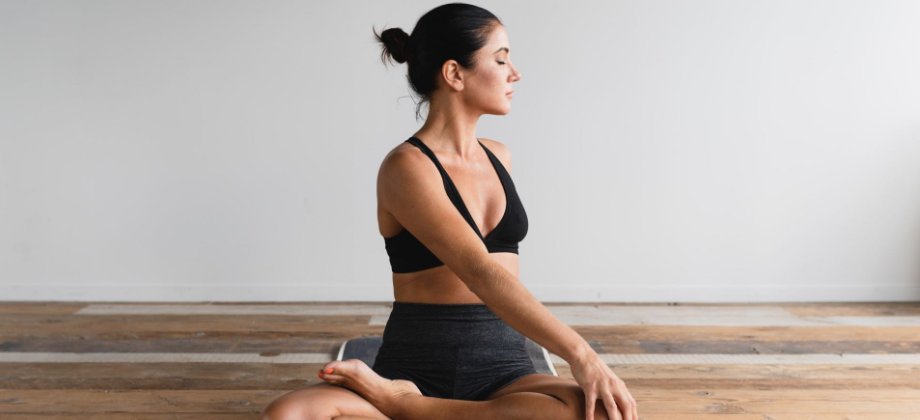
The Donation Dilemma
Should you offer donation-based yoga classes? First, let’s take the ‘should’ out of the question. Donation class models work really well for some teachers and some students and not so well for others. So let’s start by asking:
Do you want to offer donation-based yoga classes?
If so, why?
What’s the Intention?
1. To gain experience
New yoga teachers, in particular, are often encouraged to gain experience by teaching classes in return for donations, rather than a fixed price. Which works really well—I support it! There is an element of being able to afford it though.
Because although teaching for donations doesn’t necessarily mean teaching for free if you’re pitching a class as ‘donation-based to help me get experience’ then you’re likely to receive relatively low donations.
Don’t feel that you have to run donation-based classes if it costs you time and money you can’t afford. There are other ways to build experience, like covering classes for other teachers and running fixed-price classes independently.
2. To raise money for a cause
Offering a class, course or workshop on donation to raise money—or awareness—for a cause is a really nice way to give something of real value in exchange for students’ support of that cause.
Fundraising classes are often well received and successful (with plenty of marketing effort of course, as with all classes!). Make it clear to attendees whether you are also donating your time and efforts to the cause by organising, planning and teaching the class for free, or if you’re taking any money from the donations to cover your costs.
3. To offer affordable classes to people who can’t afford regular prices
Donation-based classes can be an effective way of making yoga classes more accessible to those on low income or financial support. Classes might be open to all or specifically aimed at a particular group.
Remember that making a class ‘donation-based’ alone might not be enough to make everyone feel certain that they’ll be welcomed, so be explicit about what is and isn’t expected. Is there a minimum donation? It can be helpful to set a very low minimum donation for this kind of class so that potential students don’t feel awkward about not knowing how much to pay, or worried that their donation might be seen as not enough.
4. To allow the student to determine the monetary value of your class
Some teachers feel that teaching for donations rather than a fixed price is more aligned with their personal or professional ethics than charging a fixed rate.
If that’s you and you think you can make it work, I say go for it. Just remember to respect the value of what you do and make sure that your personal needs are covered; particularly if teaching is your only source of income.
Some teachers feel that teaching for donations rather than a fixed price is more aligned with their personal or professional ethics than charging a fixed rate.
What’s the Structure?
There are numerous ways to structure a donation-based class. You might:
- Offer classes on a completely loose ‘pay what you like’ basis
- Have a suggested minimum donation. As mentioned earlier, this is often actually appreciated by students as it means they don’t have to worry that their chosen donation isn’t enough; and those who can pay more often do
- Operate a ‘donate a class’ system, where students pay a lower-than-the-local-average fixed rate but have the option of adding an additional 50% (for example) on top of that to cover the class for a student who can’t afford it
Where Do the Donations Go?
As soon as you start to use the word ‘donation’, people become more likely to ask what they’re donating money for. It’s a funny one; we rarely question the use of the money we spend on a standard fixed price yoga class. But if the teacher asks us to make a donation rather than a payment, we feel more entitled to know where our money is going.
And that’s totally fine and reasonable. The majority of ‘donations’ that we give are to charities or underprivileged groups, so the word brings up an expectation that the money is to be used in a certain, pre-agreed way.
You can simplify this for yourself and your students by being clear about the intention of your donation-based class. And unless the money is going towards a cause or charity, don’t feel the need to explain how every penny is spent.
It can help to call it something else—like a ‘pay what you can’ or ‘pay what you like class.’
Just explain that donations go towards covering your expenses, time and knowledge-sharing as a yoga teacher, and share the reason why you want to offer the class on a donation-basis rather than at a fixed rate.
It can help to call it something else—like a ‘pay what you can’ or ‘pay what you like class.’ This makes it clearer to students that the purpose of the system is to enable them to make a choice about how much they spend, rather than to collect money for a particular purpose.
It’s a Choice
Whether or not you offer yoga classes on a donation basis is your choice. You are not obligated to do so just because you teach yoga—no more than a taxi driver is obligated to offer lifts for donations. It is a choice that lots of yoga teacher make because they deeply believe in the value of yoga, and want to share it with more people. That’s a wonderful thing. But if it puts you in a difficult position, let go of the pressure and do what works for you and your business.
There’s no point in teaching a donation-based class if it makes you feel stressed out and resentful.
It might be that you can expand your accessible offerings at a later stage when your business and finances are more secure—or maybe teaching for donations just isn’t for you. Either way, it’s OK. There’s no point in teaching a donation-based class if it makes you feel stressed out and resentful.
If you do decide to do it, be clear about your intentions and make sure your students understand them too.






